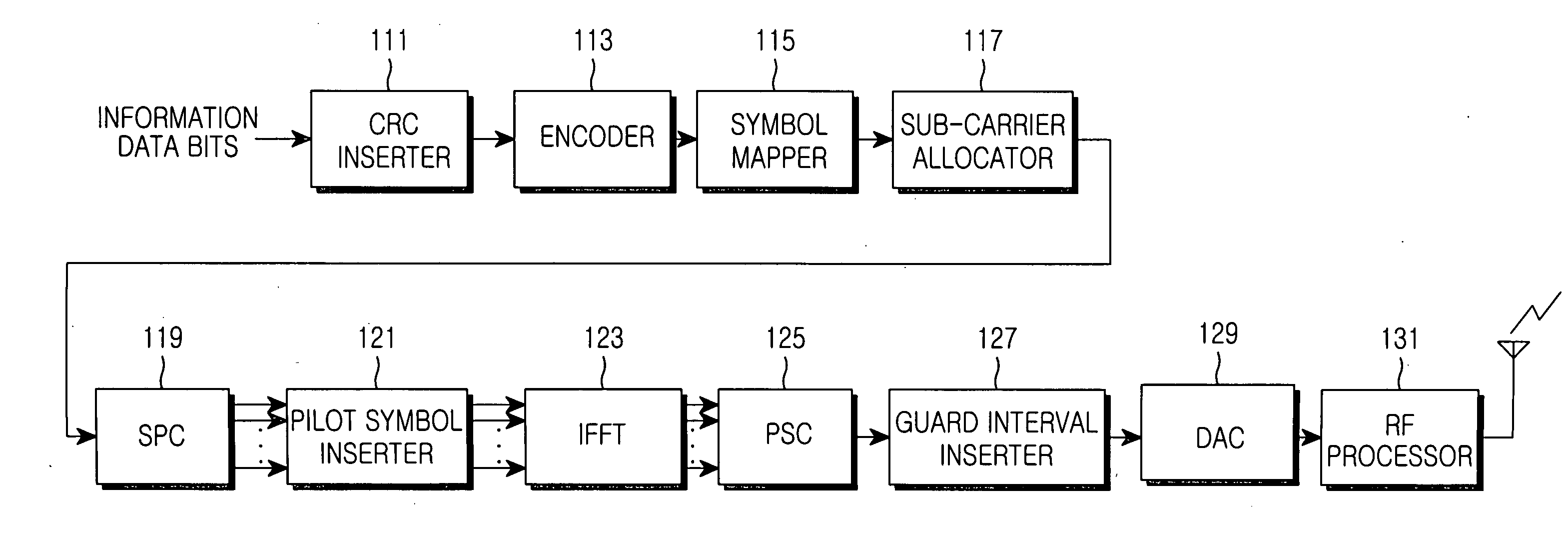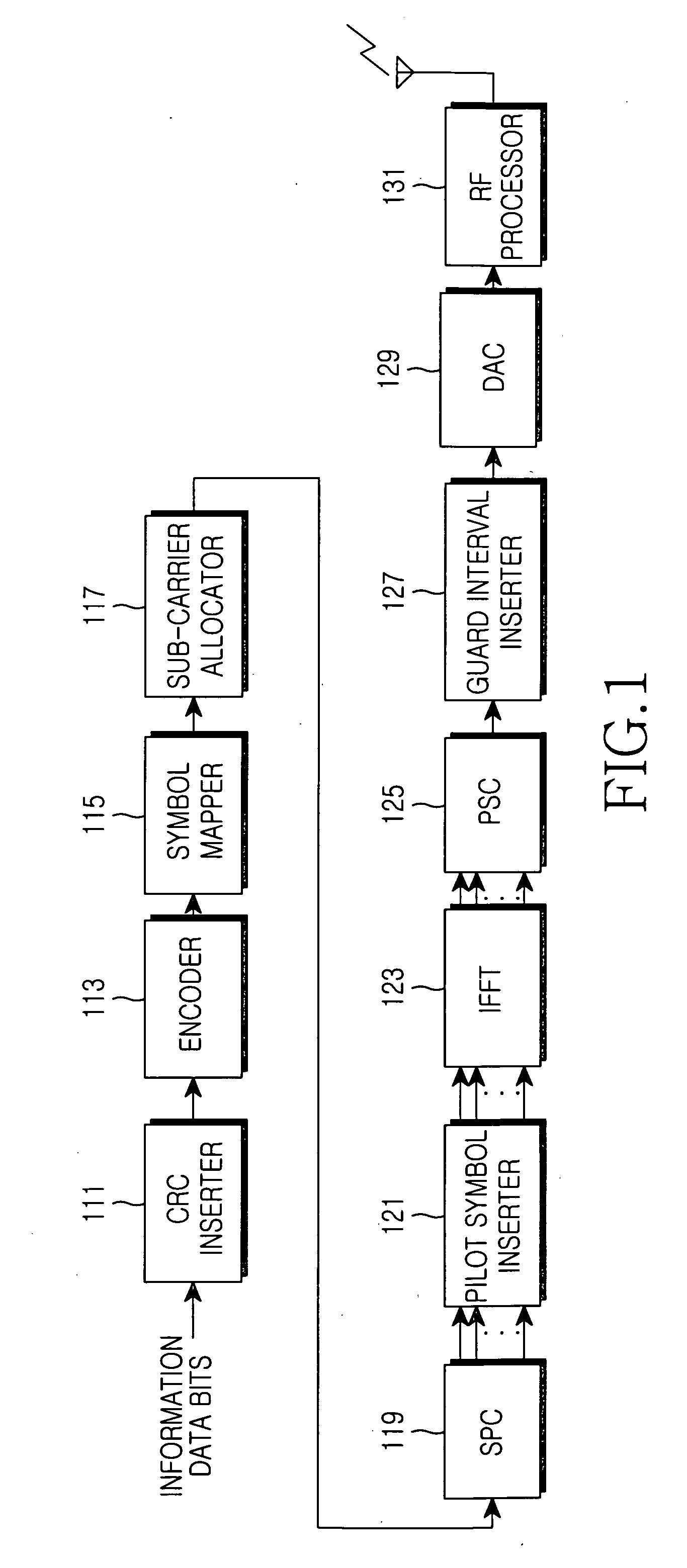Apparatus and method for controlling adaptive modulation and coding in an orthogonal frequency division multiplexing communication system
a communication system and orthogonal frequency division technology, applied in multiplex communication, orthogonal multiplex, channel coding adaptation, etc., can solve the problems of system reliability decline, resource waste, and inability to receive data normally on the four sub-carriers
- Summary
- Abstract
- Description
- Claims
- Application Information
AI Technical Summary
Benefits of technology
Problems solved by technology
Method used
Image
Examples
second embodiment
[0058] In accordance with the present invention, the time domain of the OFDMA mobile communication system is divided into a predetermined number of, for example, three time areas according to the mobile velocity. The mobile velocity is classified into a high speed, a medium speed, and a low speed, and the three time areas are mapped to the three mobile velocities. Referring to FIG. 3, the total time domain 300 is divided into a first time area 301, a second time area 302, and a third time area 303. The sub-carriers in the first time area 301 are assigned to the MSs at a high speed, the sub-carriers in the second time area 302 are assigned to the MSs at a medium speed, and the sub-carriers in the third time area 303 are assigned to MSs at a low speed.
[0059] The sub-carrier spacing is set to 22 (=4) for the high-speed MSs, 21 (=2) for the medium-speed MSs, and 20 (=1) for the low-speed MSs. The difference of the sub-carrier spacing for each time area will now be described below.
[0060...
third embodiment
[0065]FIG. 4 illustrates an operation for assigning sub-carriers in the frequency domain according to the delay spreads of MSs according to the present invention.
[0066] In accordance with the third embodiment of the present invention, the total frequency band of the OFDMA mobile communication system is divided into a predetermined number of, for example, three sub-frequency bands, according to the delay spread. The delay spread is classified into a longest, a medium, and a shortest, and the three sub-frequency bands are mapped to the three delay spreads. Referring to FIG. 4, the total frequency band 400 is divided into a first sub-frequency band 401, a second sub-frequency band 402, and a third sub-frequency band 403. The sub-carriers in the first sub-frequency band 401 are assigned to MSs having the longest delay spread, the sub-carriers in the second sub-frequency band 402 to MSs having the medium delay spread, and the sub-carriers in the third sub-frequency band 403 to MSs having...
fourth embodiment
[0073]FIG. 5 illustrates an operation for assigning sub-carriers in the time domain according to the delay spreads of MSs according to the present invention.
[0074] In accordance with the fourth embodiment of the present invention, the time domain of the OFDMA mobile communication system is divided into a predetermined number of, for example, three, time areas according to the delay spread. The delay spread is classified into a longest, a medium, and a shortest, and the three time areas are mapped to the three delay spreads. Referring to FIG. 5, a time domain 500 is divided into a first time area 501, a second time area 502, and a third time area 503. The sub-carriers in the first time area 501 are assigned to the MSs having the longest delay spread, the sub-carriers in the second time area 502 to the MSs having the medium delay spread, and the sub-carriers in the third time area 503 to the MSs having the shortest delay spread.
[0075] After the assignment to the MSs having the longes...
PUM
 Login to View More
Login to View More Abstract
Description
Claims
Application Information
 Login to View More
Login to View More - R&D
- Intellectual Property
- Life Sciences
- Materials
- Tech Scout
- Unparalleled Data Quality
- Higher Quality Content
- 60% Fewer Hallucinations
Browse by: Latest US Patents, China's latest patents, Technical Efficacy Thesaurus, Application Domain, Technology Topic, Popular Technical Reports.
© 2025 PatSnap. All rights reserved.Legal|Privacy policy|Modern Slavery Act Transparency Statement|Sitemap|About US| Contact US: help@patsnap.com



